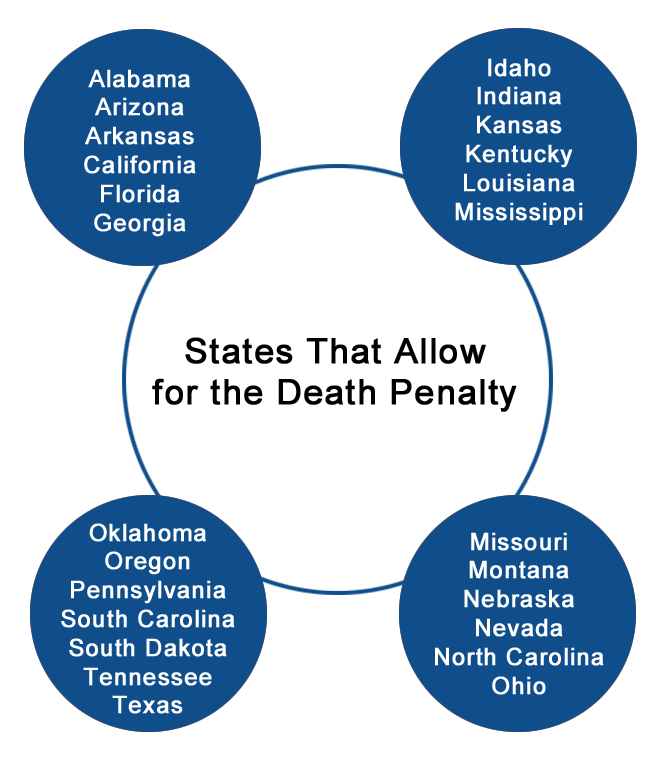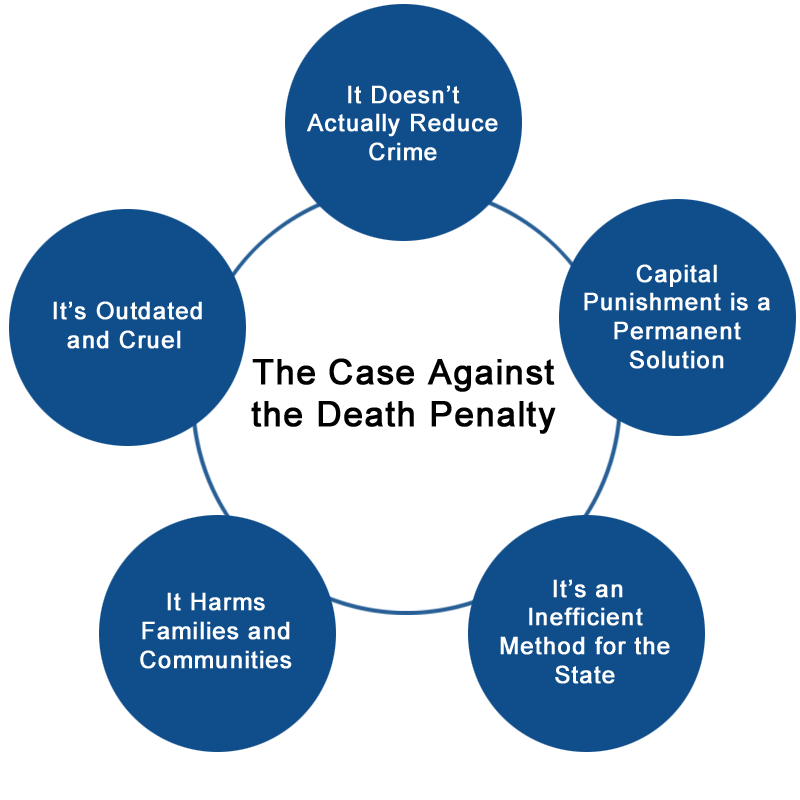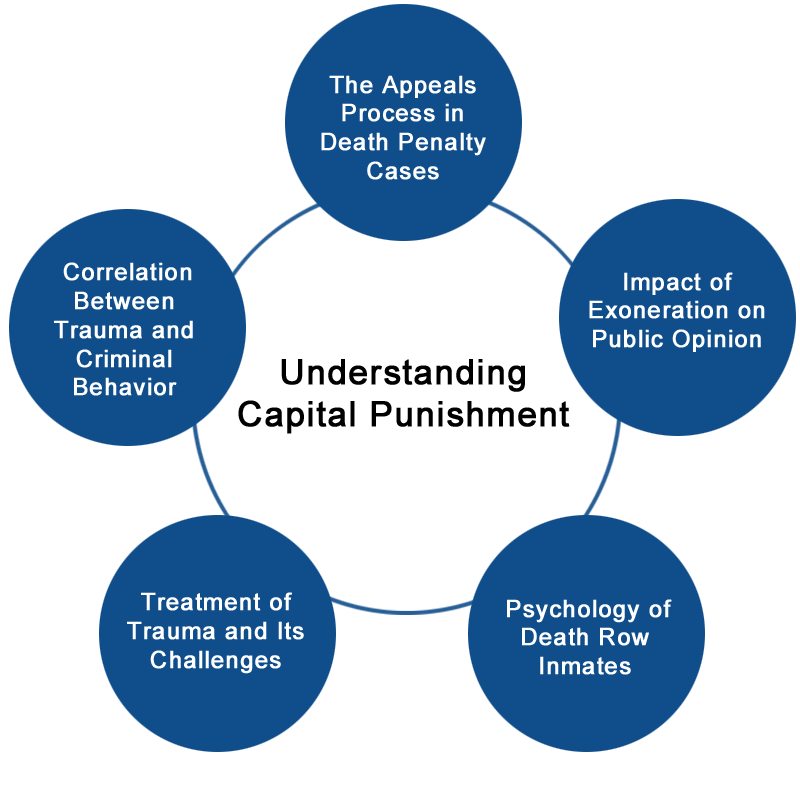Death Penalty
Reserved for the most serious crimes, the death penalty is by far the harshest punishment handed down in the criminal justice system. While the method varies by state, from the most prominent, lethal injection, to electrocution, hanging and – in four states – firing squads, the result is always the same: those convicted are executed at the hands of the state.
 History of the Death Penalty
History of the Death Penalty
The origins of the death penalty stretch all the way back to the very first formalization of laws, when Hammurabi’s Code was established around 1750 B.C. These laws, governing ancient Babylon, cited 25 different crimes that could result in the death penalty.
Today, the death penalty is upheld in 27 states, with the rest having abolished it. The states that still currently allow for the death penalty include Alabama, Arizona, Arkansas, California, Florida, Georgia, Idaho, Indiana, Kansas, Kentucky, Louisiana, Mississippi, Missouri, Montana, Nebraska, Nevada, North Carolina, Ohio, Oklahoma, Oregon, Pennsylvania, South Carolina, South Dakota, Tennessee, Texas, Utah, and Wyoming.
Much as the states themselves are divided over the death penalty, so too have the American people been deeply divided on this issue. To some, it’s a necessary evil that the state must reserve the right to kill. To others, it is a deeply problematic form of punishment, fraught with issues that render it ineffective at best and barbaric at worst.
 The Case Against the Death Penalty
The Case Against the Death Penalty
Proponents of capital punishment support it based on the notion that it deters violent crime, is a suitable punishment for certain particularly heinous acts, and gives the families of victims a sense of closure. However, there are several arguments that point out glaring flaws in the death penalty, not only within the American criminal justice system but as a concept. A brief summary of a few of these arguments follows:
It Doesn’t Actually Reduce Crime: There have been numerous studies conducted to determine what impact – if any – the possibility of capital punishment has on the rate of violent crimes. Looking at states in which capital punishment was abolished, there was no measurable difference in violent crime. Even comparing states that uphold the death penalty against their counterparts, we see little difference. Because of this, the consensus that has emerged, verified by criminologists, is that there is no evidence to conclude that the death penalty deters crime more than incarceration.
Capital Punishment is a Permanent Solution: For those who are incarcerated, even those on death row, the hope of exoneration remains. For example, new evidence could emerge that could allow for an appeal. But once someone has been executed, there is no hope of proving their innocence. Nor is there any chance of them being rehabilitated for their crimes. In fact, the very presence of this form of punishment can create resentment and resistance to the kind of rehabilitation we should be pursuing.
It’s an Inefficient Method for the State: Between the costs of trials, the increased security concerns and the length of the appeals process, capital punishment can be far more expensive than simply sentencing a criminal to life in prison. So not only does it cost the taxpayers more, but it is also severely traumatizing for the prison workers who must serve as the state’s executioners. This is partially why 37 states give juries the option of recommending a life sentence with no possibility of parole in lieu of the death penalty.
It Harms Families and Communities: For the families of the victims, the length of the appeals process can lead to years spent in uncertainty as to whether they will ever gain closure. This, in turn, robs them of the hope of ever experiencing true reconciliation. For members of marginalized communities, who face much greater odds of receiving the death penalty than those of higher societal standing, it’s another form of legal discrimination. The racial disparity on death row is shocking, with a vast majority of those incarcerated being Black and Latinx. Additionally, the odds of receiving the death penalty are far higher when the victim is white.
It’s Outdated and Cruel: When Hammurabi’s code was written, the king himself was looked at as almost a divine authority. Humanity has evolved somewhat since then, and yet we still allow the state to hold authority over whether we live or die. Some countries have moved beyond this practice, causing diplomatic strain with those who have not. Even in countries that still allow for capital punishment, critics view it as immoral, inhumane and shameful. Essentially, the argument goes, we as a civilization have moved beyond “an eye for an eye.”
As vocal critics of the death penalty in particular – and systems that emphasize punishment over rehabilitation in general – The Fair Fight Initiative agrees with many of these points. On a macro level, the presence of capital punishment as a deterrent harms our fellow citizens, makes our communities less safe and fails to create any meaningful change.
On an individual level, we see similar failures. Justice is not punitive, but restorative. But for those facing the death penalty, the punishment is all there is. There can be no lasting change. There can be no lessons learned. There can be no hope of breaking the cycle of violence. When death is all that awaits those convicted, all they are left with is the fear, anger and moral vacuum that led them to their crime in the first place.
 Understanding Capital Punishment
Understanding Capital Punishment
As with anything, it’s vital that we are able to pause any value judgments in order to fully understand the death penalty as it operates in our country.
While it is generally reserved for murder, there are certain crimes such as killing an agent of the state or terrorism that can also receive the death penalty. Once convicted, those on death row have the right to appeal their case, first to the state appellate courts and then eventually to the U.S. Supreme Court. They may also file habeas corpus petitions to challenge their detention.
Several of the more high-profile appeals filed from death row, which have led to exoneration, have helped shift public opinion. This is especially true for cases in which someone was tried, found guilty, executed, then later determined to be innocent. There has long been a strong national sentiment toward the death penalty, but with each posthumous exoneration, that support wanes.
In recent years, research into the psychology of death row inmates has revealed startling new information that could further tip the scales. Researchers have found a massive prevalence of childhood trauma in populations of death row inmates they’ve studied, suggesting a strong line between early suffering and violent behavior later in life.
Whether abuse, neglect or something worse, trauma early in life can manifest itself in unexpected ways, owing to the effect it has on the still-developing brain. Hampering everything from impulse control to emotional control, this neurological damage is compounded later in life, increasing aggression, and lowering defenses against depression and anxiety.
These deep-seated issues can be treated, but often those affected lack the means or the desire to. Instead, they fall into cycles of substance abuse, perpetuation of violence and emotional spiraling. And while not all those who have been similarly traumatized will turn to a life of crime, it’s telling that a majority of death row inmates share this same deep-seated injury.
How You Can Help
The Fair Fight Initiative believes that the cause of justice can only be won through understanding, cooperation and respect for the liberties each individual deserves. As a non-profit dedicated to defending and protecting those who are at risk of being neglected, abused and in some cases executed by the criminal justice system, we stand in opposition to capital punishment.
Of all the tools that our broken system of justice uses, the death penalty is by far the most tragic. We not only want to help move society beyond these barbaric methods, but we also aim to create true racial justice in America. This means advocating for much-needed reforms, representing those who have lost loved ones to the cracks in the system, and raising awareness of the toll mass incarceration takes on our society.
Join us in empowering our fellow Americans and lifting up the most vulnerable among us by making a donation today. Together, we can help our country live up to its lofty promises of providing freedom and justice for all.
Featured in The Media






 History of the Death Penalty
History of the Death Penalty The Case Against the Death Penalty
The Case Against the Death Penalty Understanding Capital Punishment
Understanding Capital Punishment